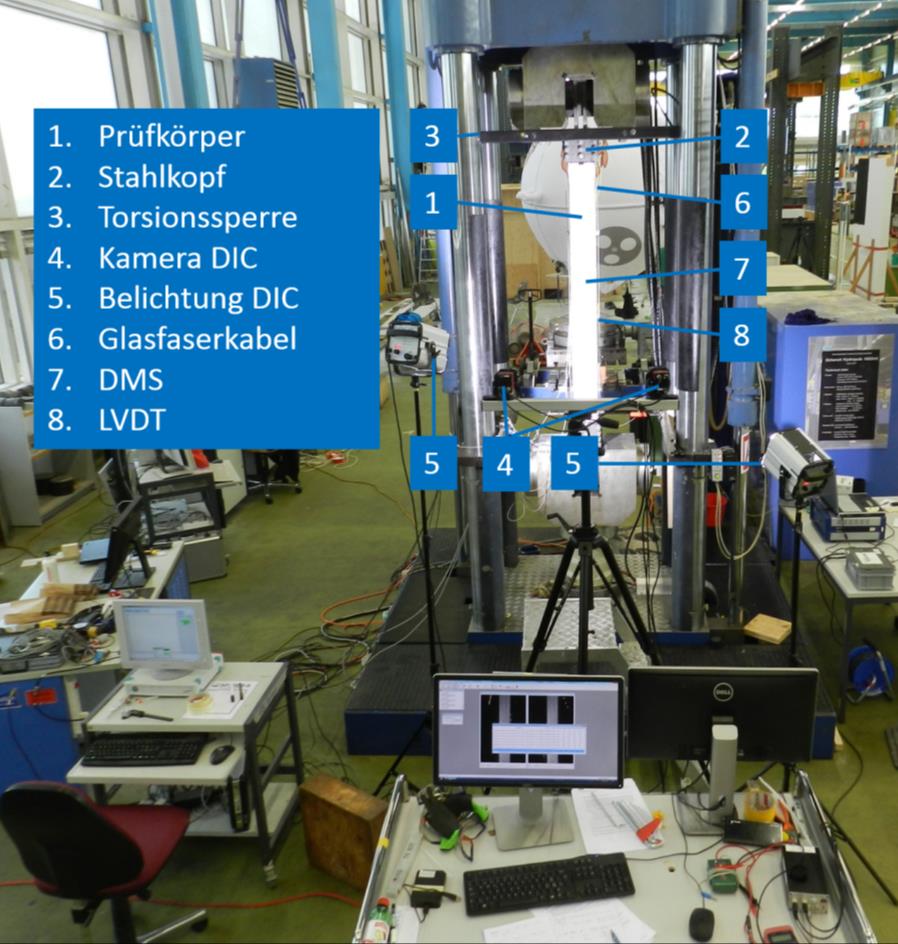Experimental study on the bond-slip behaviour of CFRP laminates bonded on RC tensile members
(original title: Zugversuche an mit CFK-Lamellen verstärkten Stahlbetonelementen)
Author: Dominik Lötscher
Language: German
Abstract
In this Master’s thesis, the composite behaviour of externally bonded carbon fibre reinforced polymers (EB-CFRP) and concrete was investigated on the basis of theoretical models and tests on reinforced concrete tensile members.
For the modelling of the composite behaviour the estimation of the crack spacing is crucial. Four models from the literature were examined. Based on these models, the theoretical distribution of slip, normal and shear stress for reinforcing steel and the CFRP-laminates were worked out using the mixed tension chord according to Ulaga (2003).
The load-displacement behaviour was experimentally investigated on four tension members. The type of adhesive and the steel reinforcement content were varied. The behavior of a newly developed adhesive was tested in this study on EB-CFRP laminates bonded to concrete. The measurement instrumentation included 3D-digital image correlation (DIC), fiber optic strain measurement, LVDT, and strain gauges.
Usually, constitutive properties for the composite behaviour of EB-CFRP laminates are defined by means of pull-off tests in order to determine the fracture energy via force and strain measurements (with strain gauges). In the experiments, the shear stress was actually quantitatively measured with novel measuring systems. The maximum shear stress within an intermediate crack element was determined via the strain gradient. It was also possible to measure the corresponding slip. The ultimate slip before delamination was determined by means of the measured separation. For the maximum shear stress and the corresponding slip, no clear difference between the two types of adhesive could be determined with respect to their load-deformation behavior. The final slip value of the newly developed adhesive tended to be higher.
In summary, the linearity of the first phase of bond could be verified thanks to full-field displacement measurements with DIC. In addition, it was also possible to quantify the key points of the composite bond stress-slip relationship. The comparison with existing models, however, showed the need for research on the bond of tensile members with EB-CFRP.

